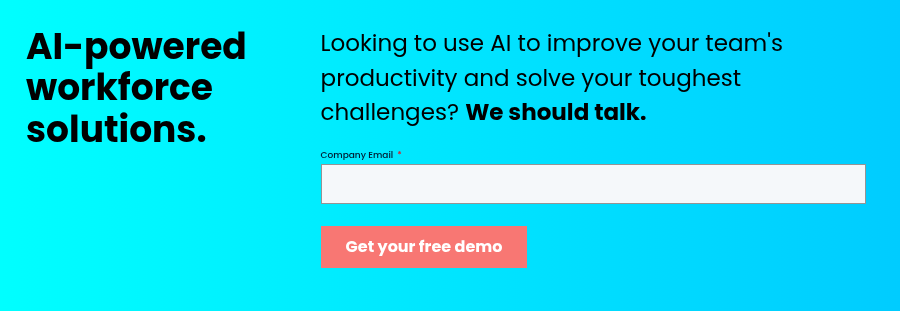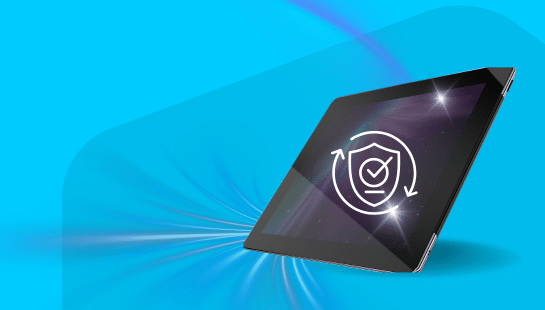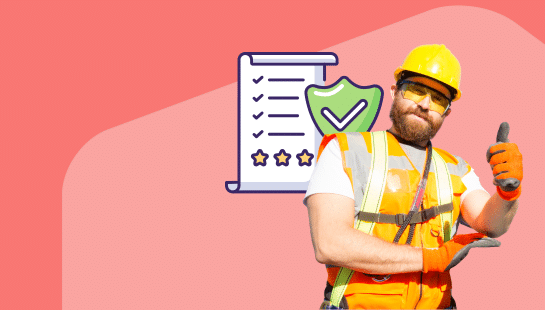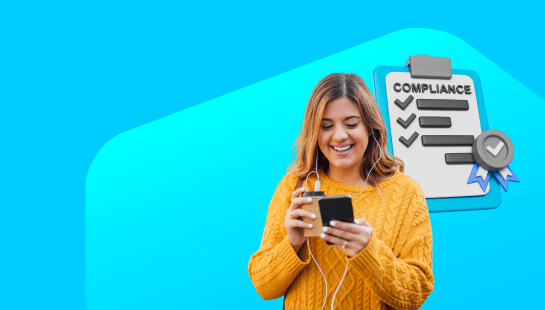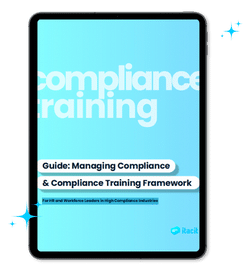Large companies face a startling reality – 16% of their employees leave within the first six months. AI-powered onboarding is changing these numbers. Companies that use AI see their new hires staying 30% longer during their first year.
Manual onboarding creates unnecessary delays. To cite an instance, see how Hitachi spent 10 to 15 days to onboard employees through traditional processes. Their switch to AI solutions cut four days from this timeline and reduced HR teams’ workload from 20 hours to just 12 hours per hire. The results speak volumes – 65% of HR professionals say AI onboarding tools boost employee retention, while 53% note faster onboarding cycles.
AI reshapes onboarding for HR teams and new employees alike. The process becomes streamlined through automated tasks, custom learning paths, and round-the-clock chatbot support. These tools help create customized experiences for each employee that boost participation and output from the start.
This piece shows you how AI accelerates employee onboarding with real-life success stories and practical implementation strategies to ready your organization for 2025 and beyond.
How AI speeds up employee onboarding
Manual onboarding wastes HR resources and creates bottlenecks for new hires. Research shows manual onboarding takes between 8-11 hours per hire. More than 69% of managers say it takes too much time and attention. The good news is that AI technology changes this reality.
Automating repetitive tasks
AI cuts down the administrative load by handling routine onboarding procedures that once needed constant human attention. This change brings clear improvements:
- HR teams using AI for onboarding report a 53% reduction in onboarding time
- Companies save about $18,000 yearly through AI onboarding automation
- Tasks like filling forms, answering policy questions, and setting up system access happen automatically
“AI lightens the load on HR teams by handling time-consuming administrative tasks,” states a recent industry report. Your HR staff can now build genuine connections with new team members instead of getting buried in paperwork.
The benefits go beyond saving time. Small businesses with 50-99 employees lead the way in adopting AI for onboarding, with 51% already using these solutions. This shows that companies of any size can benefit from AI onboarding tools.
iTacit’s AI HR Assistant shows this trend by augmenting onboarding tasks with a helpdesk-type chatbot to give new employees answers. It also opens up HR team teim to keep the human element new employees need. The system backs up every answer with original documentation so that employees have contextual information during orientation.
Reducing manual paperwork
Paperwork often causes the biggest headaches during onboarding. AI changes this through:
- Document digitization and automated management
- Smart form pre-filling based on existing employee information
- E-signature workflows that eliminate paper-based approvals
- Optical Character Recognition (OCR) for rapid document verification
These breakthroughs create measurable benefits. Organizations using AI for paperwork automation save 45-105 minutes per hire on document collection. The technology also reduces errors in data entry and compliance documentation.
Texans Credit Union’s case proves this point. They used robotic process automation to grant system access. A task that took 15-20 minutes now takes less than a minute. Hitachi cut their onboarding time by four days and reduced HR involvement from 20 hours to just 12 per new hire.
New employees now spend less time on paperwork and more time becoming productive team members. iTacit’s employee onboarding software streamlines this process with integrated AI tools that eliminate redundant data entry while meeting compliance standards.
Real-time task tracking and reminders
AI gives unprecedented visibility into the onboarding process. Modern platforms offer:
“Interactive dashboards that track essential metrics such as module completion rates, time spent on content, and employee sentiment derived from pulse surveys or behavioral signals”.
This immediate monitoring helps your team spot where new hires might struggle. AI algorithms analyze patterns in behavior, communication, and feedback to identify people at risk of disengagement or early departure.
The technology handles follow-up messages automatically. AI systems send reminders until tasks are complete instead of HR staff checking in with each employee. This gentle but consistent approach keeps onboarding moving forward without overwhelming your HR team.
Training gets better, too. AI suggests extra materials based on how employees handle specific topics. If someone struggles with marketing analytics questions, the system recommends additional resources in that area.
Managers gain valuable insights into onboarding effectiveness. You can see which parts of your process work well and which need improvement. This allows continuous refinement based on real employee experiences rather than guesswork.
AI doesn’t just make employee onboarding faster, it makes it more efficient, customized, and effective for everyone.
Personalized onboarding journeys with AI
Generic, one-size-fits-all onboarding doesn’t work anymore. Research shows employees who receive customized onboarding are 3X more engaged at work and become productive 50% faster. AI brings this customization to new heights.
Tailoring content to job roles
Each position needs specific skills, knowledge, and tools. AI onboarding technology understands these needs and adjusts the experience.
A retail company shows this perfectly. AI builds different training paths based on roles. Sales associates learn about products and checkout processes. IT specialists focus on system navigation and troubleshooting. This targeted approach saves time by skipping irrelevant information.
“When technical employees receive hands-on modules while new managers get leadership programs, everyone wins,” notes a specialist from iTacit’s AI HR Assistant team. Their platform looks at skills, career goals, and role requirements to create customized training.
Convin’s AI tools take customization to another level. Contact center employees practice with simulated customer conversations. New staff handle various scenarios, including objections and escalations, before talking to real customers.
Adapting to learning styles
People absorb information differently. Some prefer videos, others like reading, and many need hands-on practice. AI spots these differences and adjusts the content.
The VARK model spots whether people learn better through visual, auditory, read/write, or kinesthetic methods. AI platforms match content formats to each person’s best learning style.
These practical examples show how it works:
- Visual learners get diagram-rich tutorials and video demonstrations
- Auditory learners receive podcast-style explanations and audio guides
- Read/write learners use detailed written documentation
- Kinesthetic learners work with interactive simulations and practice exercises
AI monitors these choices and improves the learning experience. New employees grasp concepts faster and remember more when they learn their way.
Creating custom training paths
AI builds individual training experiences based on multiple factors, going beyond role and style adaptations.
Data about performance, skills, goals, job needs, and progress helps AI create personal paths that boost engagement and retention. Content difficulty, format, and pace change based on continuous assessment.
Marketing associates who struggle with social media analytics get extra help in that area. AI speeds through topics they know well. This balanced approach keeps employees challenged but not overwhelmed.
“For new hires, AI can generate an onboarding learning path that covers company culture, tools, processes, and role-specific training. This path can adapt as the new employee becomes more familiar with their role,” explains an onboarding specialist.
Results prove this works. Companies using AI-powered personalized onboarding see:
- Higher employee satisfaction and engagement
- Faster time-to-productivity
- Improved knowledge retention
- Better overall performance scores
AI doesn’t just automate onboarding, it reshapes it by treating each employee uniquely. Tasks that once needed extensive HR resources now happen automatically through platforms like iTacit’s AI-driven system. It connects naturally with popular HR platforms like Zoho, SAP, and BambooHR.
This personalization grows easily with your company, whether you’re training ten employees or ten thousand.
24/7 support with AI chatbots
New employees have countless questions when they start a job. They need quick answers about everything from benefits policies to IT setup. AI chatbots have changed how companies handle employee onboarding by creating support systems that work 24/7.
Answering FAQs instantly
AI chatbots handle repetitive questions that usually flood HR inboxes during onboarding. These virtual assistants use natural language processing to understand and answer employee questions live.
One big advantage is that they give consistent information every time someone asks a question. You won’t get different answers from various team members or outdated policy explanations. The information stays accurate and current in every interaction.
AI chatbots typically handle questions about:
- Company policies and procedures
- Benefits and leave balances
- IT systems and access
- Training schedules and requirements
- Office logistics and protocols
These chatbots prove especially valuable to global organizations. New employees get immediate help in different time zones without waiting for headquarters’ business hours. This easy access helps create a smoother transition whatever their location.
iTacit’s AI HR Assistant shows this capability through its natural language understanding. New employees can ask questions in everyday language instead of searching through complex documentation systems.
Reducing dependency on HR staff
HR managers used to spend lots of time answering the same simple questions over and over. AI chatbots now handle routine questions automatically, which substantially reduces this burden.
Companies using AI onboarding chatbots report a 53% reduction in onboarding time. It also shows that 43% note streamlined administrative tasks. This lets HR professionals focus on more strategic priorities.
“Instead of answering the same basic questions over and over, they can dedicate their time to building relationships, promoting company culture, and tackling complex HR challenges,” notes one industry report. This change transforms HR’s role from administrative to strategic.
AI chatbots do more than save time. They spot knowledge gaps by analyzing question patterns. This helps HR teams improve their onboarding materials by identifying common confusion points. Each subsequent onboarding becomes more effective through this continuous improvement cycle.
iTacit’s employee onboarding software blends these capabilities into a detailed platform. HR teams maintain visibility while automating routine support tasks.

Improving response time for new hires
First impressions really matter. New employees can lose confidence and engagement when their questions go unanswered. AI chatbots solve this by providing instant responses.
The difference is dramatic, employees now get answers in minutes instead of waiting for days. A case study showed that AI-driven chatbots for onboarding trimmed response times from days to mere minutes. Another organization saw employee satisfaction rates improve with 85% of new hires reporting a smoother transition.
AI chatbots offer several key benefits:
- They stop first-week confusion and dropoffs
- They help remote employees consistently
- They remind people about training deadlines automatically
- They organize employee questions by topic for easier answers
The benefits go beyond convenience. Studies show 75% of customers expect around-the-clock service. Employees now expect the same level of support. Using AI to meet this need creates a positive first impression of your organization’s dedication to employee success.
AI chatbots also help reduce onboarding bottlenecks. The chatbot provides immediate help or directs questions to the right department, even when managers aren’t available.
The psychological benefits are huge. New employees feel supported at all times, whatever questions come up. This constant access to information helps them become productive team members faster and reduces the anxiety of starting a new job.
Using AI to automate compliance and documentation
Paperwork and compliance demands create major headaches during onboarding. A single documentation error can trigger legal issues, get pricey fines, or cause audit problems later. AI in employee onboarding tackles these challenges directly.
Auto-filling forms and contracts
The time-consuming task of filling out repetitive paperwork is becoming obsolete. AI transforms this tedious process through smart digital forms that auto-populate relevant information across documents. This automation speeds up the process substantially – tasks that usually take humans 1-2 hours now finish in under 90 seconds.
AI streamlines form completion through:
- Smart triggers that start preboarding tasks right after candidates accept offers
- Role-based templates that match resources to each new hire’s position
- Auto-populated fields that transfer employee details across forms, which eliminates duplicate data entry
- AI detection features that convert unstructured documents into editable PDFs
“The goal isn’t just to fill a form. It’s to eliminate the entire category of manual work around document prep and submission,” notes one industry expert. This change lets your HR team build meaningful connections with new employees.
Companies with multi-state operations can use AI tools like iTacit to handle different regional requirements. iTacit’s AI HR Assistant learns your organization’s specific documentation needs and adapts, making onboarding consistent whatever the location.
Tracking legal and policy acknowledgments
Tracking signed policies, NDAs, and compliance documents isn’t optional, it’s often a legal requirement. Manual tracking risks missing vital acknowledgments or losing important records.
AI systems enhance this process through:
- E-signature integration for secure digital signing and submission
- Automated verification and compliance checks that highlight missing documents
- Cloud-based document storage that puts all employee records in one place
- Up-to-the-minute data analysis that eliminates paperwork follow-ups
WorkBright’s research shows that automated compliance tasks speed up hiring and reduce human error. AI-powered digital handbooks ensure employees see the latest version, while the system tracks acknowledgments automatically.
iTacit’s employee onboarding software shines here with digital policy distribution and automatic tracking that maintains complete audit trails without constant HR oversight.
Ensuring audit-readiness
Unexpected audits can cause panic. AI onboarding systems help maintain continuous audit-readiness through smart documentation management.
AI improves audit preparation by:
- Creating detailed audit trails of every interaction and change
- Automating documentation with timestamps and secure storage
- Offering centralized dashboards to monitor task completion
- Identifying bottlenecks and adjusting workflows automatically
Organizations using AI-powered electronic Quality Management Systems handle audits better through quick, accurate information retrieval. This quick response impresses auditors and reduces team stress.
AI minimizes human error in financial and compliance documentation. Forbes reports that HR onboarding automation leads to 50% improvement in compliance accuracy. This boost comes from standardized procedures that eliminate manual processes.
iTacit’s AI HR Assistant takes audit-readiness further. It recognizes document types, extracts key information, and routes materials to stakeholders, cutting processing time by days. Your documentation stays organized, complete, and ready for inspection.
AI transforms compliance and documentation management from a paperwork nightmare into a smooth, accurate process. You retain control while freeing HR resources for strategic work.
Boosting engagement and retention with onboarding AI
Employee retention poses real challenges, about 16% of attrition in large companies happens within the first six months. Here’s some good news: Companies using AI in employee onboarding see their new hires are 30% less likely to quit within their first year. Let’s see how AI helps keep talent engaged and committed for longer periods.
Timely nudges and feedback loops
We all remember feeling lost during our first weeks at a new job. AI prevents this through automated support systems.
AI “nudges” guide employees with gentle reminders, non-intrusive prompts arrive through familiar channels like Slack, Teams, or email. These reminders guide new hires without overwhelming them or requiring manager intervention.
Pulse surveys working alongside AI create continuous feedback, building a positive cycle where both the employee and the system grow together. AI analyzes this feedback and spots patterns that might signal confusion or disengagement early.
“Effective communication gives 60% of employees a confidence boost, while 61% say better communication directly improves their performance and increases productivity,” states one industry report. iTacit’s employee onboarding software maintains these communication channels automatically.
Early performance tracking
Quick identification of potential issues prevents larger problems down the road. AI systems link hiring data to post-hire outcomes continuously, creating insights that traditional first-year reviews can’t match.
Modern AI platforms display interactive dashboards tracking metrics like:
- Module completion rates
- Time spent on specific content
- Sentiment derived from communications
- Early indicators of disengagement
These systems quickly identify at-risk employees through behavior pattern analysis. HR teams can start targeted interventions like tailored support or mentorship programs before issues grow.
Managers get objective visibility into each new hire’s progress. They can identify who’s thriving and who needs extra support, without relying on instinct or waiting for obvious problems.
iTacit’s AI HR assistant goes further by augmenting training and performance tracking with additional insight into knowledge gaps. This creates a learning cycle that improves individual performance and your overall onboarding process.
The end goal? Creating a smooth experience where employees feel supported, engaged, and valued from day one, something traditional onboarding can’t achieve at scale.

Real-world examples of AI onboarding success
Real companies have already shown amazing results with AI in employee onboarding. These examples prove how AI turns ideas into actual business benefits.
Hitachi’s AI assistant for global onboarding
Hitachi manages about 300,000 employees worldwide in the US, Japan, and Europe. The company’s old onboarding process took 10-15 days. New hires had to fill out many forms for IT equipment, ID badges, and desk assignments.
Their custom AI digital assistant helped them:
- Speed up onboarding by four days
- Cut HR staff time from 20 hours to 12 hours per new hire
- Get new hires more involved by answering their questions right away
The AI assistant learns from company data, PowerPoint presentations, PDF files, and employment manuals. This helps it give accurate answers to new hire questions quickly.
Texans Credit Union’s RPA for system access
Texans Credit Union found a big problem in their onboarding process. New employees couldn’t log into their systems on day one. Their Chief People Officer Jenni Short said, “We spent a lot of time making sure their desk looked nice. But, oh, you can’t actually log in to the computer”.
They started using robotic process automation (RPA) for system access in September. The benefits came quickly:
- System setup time dropped from 15-20 minutes to under one minute per hire
- Managers could welcome new team members instead of doing paperwork
- Employees learned their jobs instead of fixing login problems
The HR team had only five people who weren’t tech experts. Working closely with IT helped them succeed with automation in six months.
iTacit’s AI HR Assistant in action
iTacit’s AI HR Assistant helps companies update their employee onboarding AI processes. The system only uses answers from company materials like training guides, SOPs, and policies.
Real results show:
- 87% of users say the AI Assistant answers questions better than before
- Management teams save 4.5 hours every week on employee questions
- 93% of HR users learned new things about what employees search for
The AI Assistant spots knowledge gaps through dashboards that watch question patterns. HR teams can then improve training content where employees need more help.
The system gives answers based on each employee’s role and permissions. This keeps information relevant and secure.
Luke Megarity, President and COO of iTacit, puts it well: “AI isn’t just for back-office automation. This is about giving every employee from the frontline to the C-suite with the information they need, exactly when they need it”.
How to implement AI for employee onboarding
AI-driven onboarding needs careful planning and execution. Statistics show 45% of HR professionals already use AI-driven onboarding, yet others find it hard due to limited expertise. Here’s a five-step guide that will help you add AI in employee onboarding.
Step 1: Audit your current onboarding process
A detailed map of your existing onboarding workflow helps spot bottlenecks and time-consuming manual tasks. Ask these questions:
- What tasks eat up most of your time?
- Which problems do new hires often face?
- What works well now but could work better with AI?
This full picture shows where AI can make the biggest difference in your process.
Step 2: Choose the right AI onboarding software
Your AI for employee onboarding choice should meet these key needs:
- Customization capabilities – The system adapts to your company’s requirements
- Scalability – Tools grow as your organization expands
- Integration options – Platforms combine smoothly with your HR systems
- User reviews – Other organizations’ experiences matter
iTacit’s employee onboarding software includes these features and workflows that automate routine tasks while keeping the human element.
Step 3: Train HR and managers
The best AI onboarding tools need proper training. Your HR team should know how to:
- Use AI tools with current workflows
- Handle technology adoption concerns
- Follow data privacy rules
AI improves human capabilities instead of replacing them. Teams need detailed tutorials before the system rolls out across the company.
Step 4: Start with low-risk automation
A step-by-step introduction of onboarding AI works best. Start with simple tasks like processing documents or answering basic questions. Teams adapt better with this approach.
An industry expert says, “When it comes to rolling out onboarding AI tools, less is more, especially when you’re just starting”. iTacit’s AI HR Assistant fits this need perfectly – you can start small and grow into advanced features.
Step 5: Monitor and optimize continuously
AI needs regular attention and updates. Keep track of these key metrics:
- New hire productivity timelines
- Employee retention rates
- Satisfaction scores
- Small group feedback
Your AI system’s data helps spot areas that need work. The most successful systems grow better based on ground results.
This approach creates an AI employee onboarding system that cuts down time, stays consistent, and gives new hires a better experience.

Overcoming challenges in AI onboarding
AI streamlines onboarding processes, but companies face specific challenges when implementing it. A recent survey shows 42% of HR professionals who use AI for onboarding struggle with technical integration. Companies need to tackle these challenges directly to get the most out of AI in employee onboarding.
Balancing automation with human interaction
You can’t replace the human touch in onboarding. The numbers tell an interesting story – 52% of forward-thinking companies combine AI-powered onboarding with personal follow-ups. Another 46% regularly check in face-to-face, while 43% focus on team-building activities. This mix of digital and personal approaches creates the best results.
“There’s only so much that you can show virtually,” says one expert, pointing out that company culture grows through face-to-face interactions.
iTacit’s AI HR Assistant supports this balance. It handles routine tasks so HR teams can spend more time building real connections with new hires.
Ensuring data privacy and compliance
Privacy concerns naturally pop up when AI systems handle large amounts of personal data. Organizations need strict data protection measures such as:
- Techniques that remove identifying information from datasets
- Clear explanations of data collection, processing, and sharing methods
- Robust security protocols with encryption and multifactor authentication
Following GDPR and CCPA regulations isn’t a choice – it’s required. iTacit’s employee onboarding software handles these concerns through built-in compliance features that protect sensitive data while staying audit-ready.
Avoiding information overload for new hires
New employees often feel swamped with information during their first weeks. About 45% of new hires want clearer communication about what their job involves during onboarding.
Information overload happens when new hires get too much content at once. Knowledge AI fixes this by making information available whenever needed in an easy-to-use format. Instead of forcing everyone to learn everything immediately, AI lets people find specific answers when they need them.
The right AI onboarding platform delivers targeted, relevant information based on what employees need. This helps team members learn at their own speed without feeling overwhelmed, which leads to better knowledge retention and faster results.
Conclusion
AI has changed employee onboarding from a paperwork-heavy process into a strategic advantage. Companies that think ahead now see its true potential. AI cuts down administrative work, customizes learning, and offers constant support to new hires.
The numbers paint a clear picture. New hires in companies with AI onboarding are 30% more likely to stay past their first year. The HR teams save 4.5 hours every week on asking questions. They also cut down onboarding time by 53%.
Numbers tell only part of the story. AI creates something more valuable, real human connections. Your HR team can build relationships and promote company culture while AI handles routine tasks.
These important lessons emerge as we look toward 2025 and beyond:
AI doesn’t replace human interaction, it improves it. The best systems balance automation with meaningful personal connections. Your AI tools should manage routine work so your team has more time for face-to-face meetings.
People stay involved when content speaks to them directly. AI builds custom learning paths based on roles, learning styles, and personal needs. New employees feel valued from day one with this personal touch.
Round-the-clock support makes people more productive quickly. AI chatbots give answers right away, so no one waits for business hours.
Compliance becomes easier and more complete. AI keeps track of documents, fills out forms, and maintains audit-ready records without constant checking.
Starting with AI onboarding might look tough at first. But platforms like iTacit’s AI HR Assistant make it easy to get started, even if your team isn’t tech-savvy. This solution blends with your current systems and provides AI tools for modern onboarding.
Organizations that accept new ideas will own the future. Companies using AI onboarding now will have a clear edge in getting and keeping top talent.
Remember, first impressions last. AI helps make those impressions matter.


